Ever found yourself squinting at an ingredient list, wondering if you need a chemistry degree just to decode your breakfast? You’re not alone. That’s why Clean Label Eating is gaining ground. It’s about picking foods with real, recognisable ingredients and ditching the artificial extras. If you’re ready to make simpler, smarter choices in 2025, this guide is for you.

WHAT MAKES A FOOD 'CLEAN LABEL'?
At its heart, clean label food is about clarity and realness. Shoppers are after ingredient lists they can trust—free from sneaky extras and easy to decode. Clean label means no artificial flavourings, odd-sounding chemicals, or surprise textures. Just simple, honest ingredients that speak for themselves.
CLEAN LABEL EATING: WHAT IT MEANS AND WHY IT MATTERS
Clean Label Eating is more than just avoiding artificial ingredients. It’s a lifestyle choice that prioritises transparency, real ingredients, and simpler foods. It’s about knowing exactly what you’re putting on your plate and feeling good about it.
Why It Matters
Transparency : You know exactly what you’re eating. No hidden surprises.
Health Benefits : Fewer additives mean fewer potential health risks.
Simplicity : Short ingredient lists are often easier to understand and trust.
Better Taste : Natural, real ingredients usually taste better and are more satisfying.
BREAKING DOWN FOOD LABELS: HOW TO SPOT CLEAN LABEL PRODUCTS
Trying to spot clean label foods on a crowded shelf can be tricky. Brands don’t always shout about it. Here’s what to look for:
Short ingredient lists : Clean label foods often have fewer than ten ingredients. If the list reads like your weekly shop, you’re on the right track.
Recognisable ingredients : Each ingredient should be something you know—think oats, honey, tomatoes—not a string of scientific names.
No artificial colours or preservatives : Watch for entries like E-numbers, sodium benzoate, or artificial dyes. Clean labels skip these.
Clear labelling : Honest brands often state “no artificial additives” or “free from preservatives” right on the package.
No hidden sugars or sweeteners : Scan for ingredients like high fructose corn syrup or aspartame. Clean label products avoid these.
Quick Checklist for Clean Label Products
Fewer than 10 ingredients
Recognisable, real foods
No artificial preservatives or dyes
No hidden sugars or artificial sweeteners
INGREDIENTS TO LOOK FOR—AND AVOID
Clean label isn’t just about fewer additives. It’s also about the right ingredients and steering clear of hidden nasties. Here’s what people usually look for:
| Ingredients to Look For | Ingredients to Avoid |
|---|---|
| Whole grains (e.g., oats, brown rice, quinoa) | Artificial preservatives (sodium nitrite, BHA, BHT) |
| Nuts and seeds | Artificial colours and dyes (E102, E133, E110) |
| Real fruit and vegetables (not just “fruit concentrate”) | Flavour enhancers (monosodium glutamate, or MSG) |
| Milk, eggs, butter, and simple dairy | Synthetic sweeteners (aspartame, saccharin) |
| Plant oils you know, like olive or rapeseed | Unrecognisable stabilisers and emulsifiers (polysorbates, propylene glycol) |
| Spices and herbs | Excess added sugar or syrup (corn syrup, glucose-fructose syrup) |
Simple rule: If your grandparents wouldn’t know it, you probably don’t need it in your food. Clean label products keep things clear, honest, and as close to the original as possible.

WHY PEOPLE CHOOSE CLEAN LABEL EATING
Many are changing how they shop and eat, and clean label foods keep showing up in their baskets. People aren’t just following the crowd—they’re making choices that fit their bodies, values, and the way they want to feel every day. The move is powered by a need for honesty, fewer surprises in what we eat, and a growing push for food that matches real-life needs.
Personal Health and Wellness
Better digestion : With fewer additives and simpler ingredients, the gut often works better. Many find they’re not as bloated or uncomfortable after meals.
Fewer headaches and less fatigue : Some artificial colours and preservatives can trigger headaches or tiredness. Skipping them through clean eating can help people feel sharper and more refreshed.
Managing allergies and sensitivities : Simple, clear labels mean it’s easier to spot allergens—such as nuts, milk, or wheat—and avoid them. For those with food intolerances, this can be life-changing.
Natural taste and enjoyment : By sticking with real, recognisable foods, flavours come through as they’re meant to. No weird aftertaste, just proper flavour.
Feeling in control : When you know exactly what goes on your plate, you’re less likely to worry about unknown effects or reactions.
“Real food doesn’t have ingredients. Real food is the ingredient.” — Jamie Oliver
CHALLENGES OF CLEAN LABEL EATING
Choosing clean label foods sounds simple on paper, but the reality isn’t always easy. People run into a mix of obstacles, whether it’s the higher price tag, labels that leave you puzzled, or shelves that don’t offer much choice.
Tips for Overcoming Clean Label Challenges
Shop smart and compare prices.
Buy in bulk when it makes sense.
Cook at home with whole, simple ingredients.
Use apps to check for clean label options.
CLEAN LABEL EATING FAQ
Q: What is Clean Label Eating?
A: It’s a way of eating that prioritises simple, real ingredients without artificial additives or complex chemicals.
Q: Are clean label foods always organic?
A: Not necessarily. While many clean label foods are organic, the focus is more on ingredient simplicity and transparency.
Q: Is clean label eating more expensive?
A: Sometimes, but there are budget-friendly options if you shop smart and focus on whole foods.
Q: How can I start eating clean label?
A: Start by reading labels, choosing whole foods, and avoiding products with long, complicated ingredient lists.
TL;DR
Clean Label Eating lines up well with the bigger shift in how people think about food—looking for the real deal over empty health claims. Simple changes, like swapping out one processed snack for something with just a handful of ingredients, can kick things off. Staying sharp when reading labels keeps you in control and helps avoid food fads that promise the world.
This is less about strict rules and more about feeling good about your choices, one meal at a time. As more brands catch on and shoppers ask for honesty, Clean Label Eating will likely keep shaping what we all find on supermarket shelves. Thanks for reading—share your own clean label tips below, or let’s talk about what you’ve spotted in your local shops. Every small step is a win.


